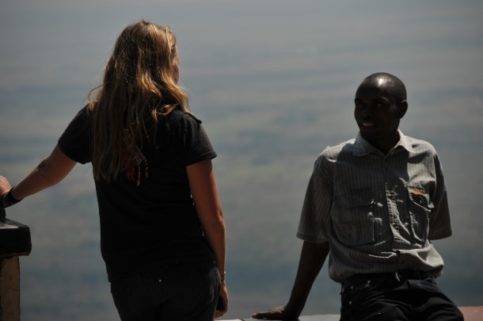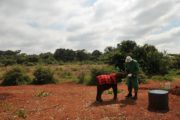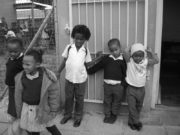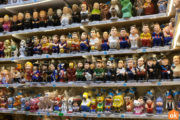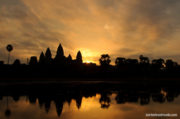Lessons learned about Kenya to break down stereotypes
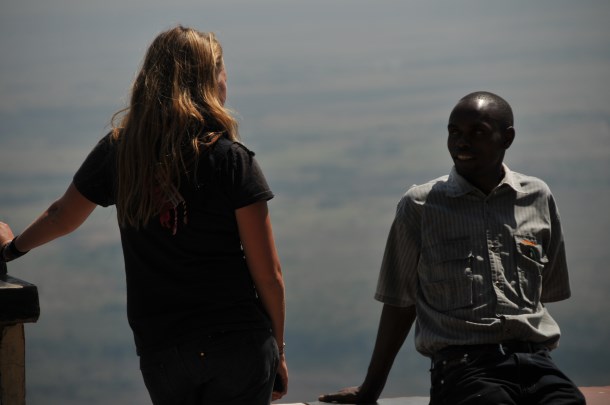
My friend Bri practicing her Swahili while chatting with a local Kenyan – Great Rift Valley View Point, Kenya
“I wish I had more time” is probably all people can think when they’re sitting at the airport waiting to fly home from Kenya. For the last two weeks I’ve been working in Kenya’s Narok South Region. Tourists familiar with this place might know it better as a part of the Masai Mara. It’s here that I learned some cool things about Kenya that everyone should know.
I didn’t get to spend nearly enough time getting to know Kenya and its people. It probably has something do with the fact that the country has so many ethnic groups, each with their own identity, that recent census attempts have been unsuccessful in documenting all of them.
Part of this is a result of conflict prevention, as the diversity of each ethic group in Kenya makes visiting each community like going to a different country. Most ethnic communities in Kenya have distinctly unique cultures with different languages, customs, lifestyles, and clothing.
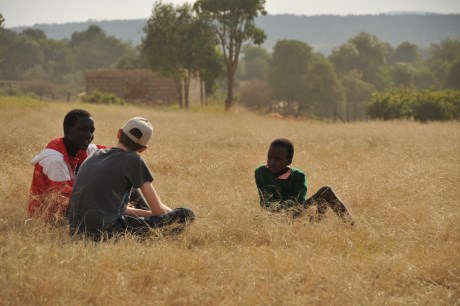
Talking with people is the best way to learn about a new place. These Kenyan and Canadian students are sharing and learning from each other
Learning was a big part of my experience in Kenya because I was able to meet locals from the communities I was visiting, worked with North American youth to facilitate their learning about Kenya and international development, while trying to develop my own understanding of a country with only a snapshot of it.
With this in mind I guess I should break down some of the stereotypes that people associate with countries like Kenya and give you some up to date information about how people live in cities and rural communities like Sikirar, where I was staying.
Technology: people in Kenya, like all 55 African countries use and have cellphones as well as the internet, even in rural places.
Clothing: in Kenya ethnic groups do wear cultural clothing but for most people, especially those in their twenties, these clothes are only worn during ceremonies and not as every day wear. That’s right, we all wear the same style clothes…thanks new media!

Chilling with my buddies Edwin and Robert. This is what people in Kenya usedd to wear but it’s more for show and traditional ceremonies than everyday wear in Masai communities. Although the Shuka (blanket) is commonly used – Sikirar, Kenya
The city: capital cities like Nairobi are pretty much the same as anywhere else. They have paved roads, skyscrapers, hotels, businesses, traffic and restaurants. The main differences might be architectural styles, states of development, population, or poverty level; to name a few.
Think about this: Nairobi is the business hub of East Africa and has an awesome club and party scene, fashion scene and film scene. Check out the film Nairobi Half Life if you want to see what’s up!
Cool financial system I learned about Kenya:
I learned that that Kenya has something called M-Pesa which is a new way to exchange and use money. Basically, you have money on your cell phone and can use it to pay for things in the same debit card works. You can also change money from phone to phone which has resulted in a safer way to make transactions as well as keep money secure.
Something you should never do in Kenya:
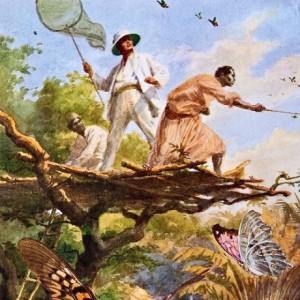
Don’t be that guy. Dress normal not like the Butterfly hunter by Arthur Twidle- Photo Credit: Puuikibeach Flickr
You should never dress in full safari regalia! That’s right. If you’re flying to Kenya for a safari and find yourself landing in Nairobi, know that it’s a regular city and you will look like a fool if you’re dressed in tan head to toe (with the hat to match).
Imagine flying to Toronto and you’re planning to go on a weeklong hiking trip so you show up at the airport in full camo…that’s right you’re officially a d-bag.
You’re not Indiana Jones so don’t dress like him!
Cool thing about language in Kenya:
Kenya has a language called sheng. From what I’ve gathered it’s a language only young people use and it’s very hard to learn because it’s always changing. Making it even more complicated is that fact that, depending on where you live, sheng can be completely different.
It’s kind of like a code language to hide what you’re talking about from older people. If you’re going to learn shang, just remember that grandparents won’t have a clue what you’re saying and it’s disrespectful.
Language lesson: “Poa” means “cool”
Final thoughts:
Jambo is a word that, used on its own, is grammatically incorrect. The world itself is derived from Swahili but there are predicates that need to be used if you’re planning on using it correctly. On its own it’s more of a tourist word but still fun to try, just make sure you don’t say it if you’re at a club in Nairobi.
In short, these are just a few things you should know about Kenya . Feel free to comment and add anything you think I missed because I only saw a sliver of the amazing country that is Kenya.
Oh yea, and hakuna matata actually exists here and means…
Well I guess you’ll just have to visit to find out 😀
Happy Travels,
Yak

